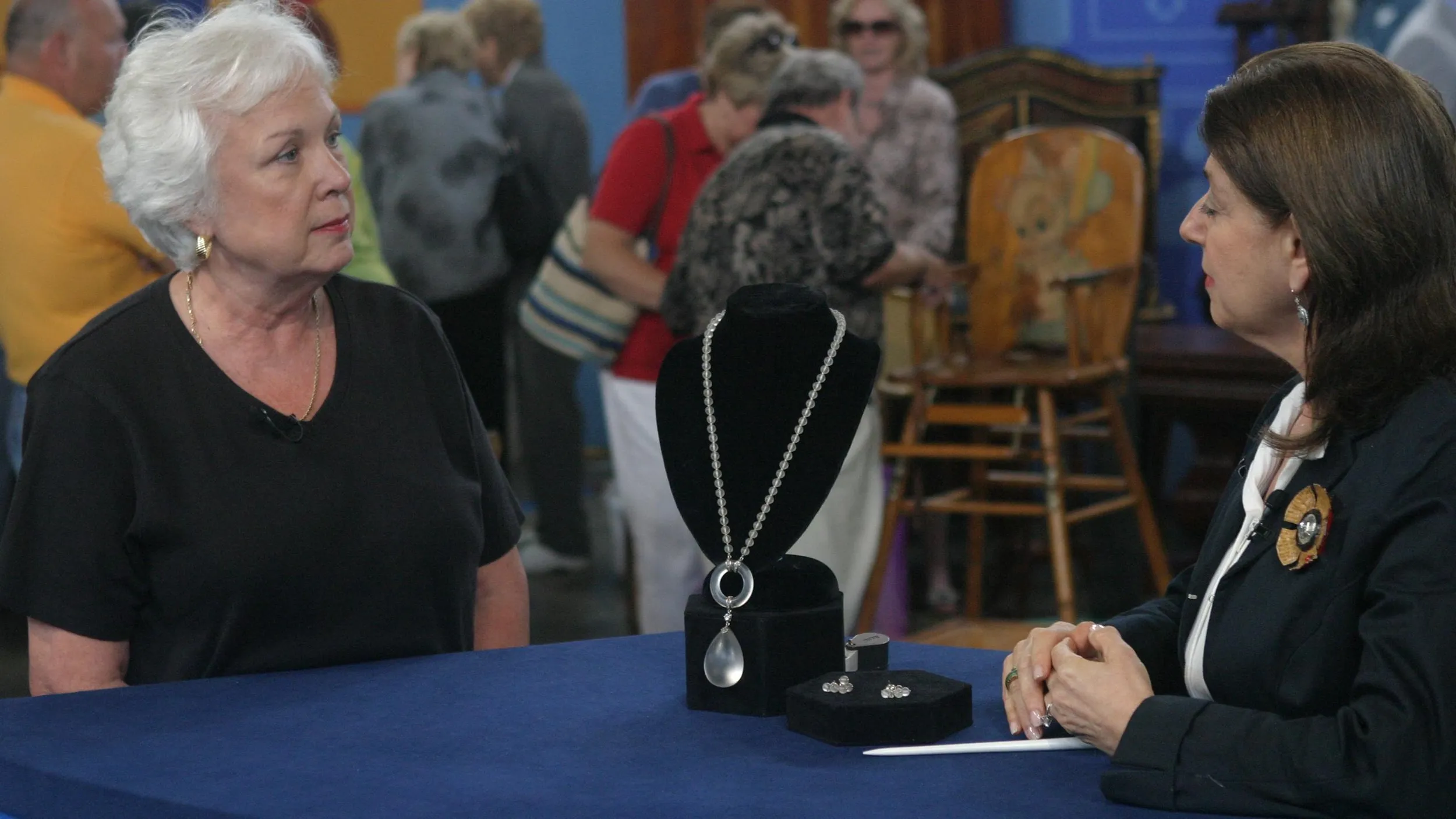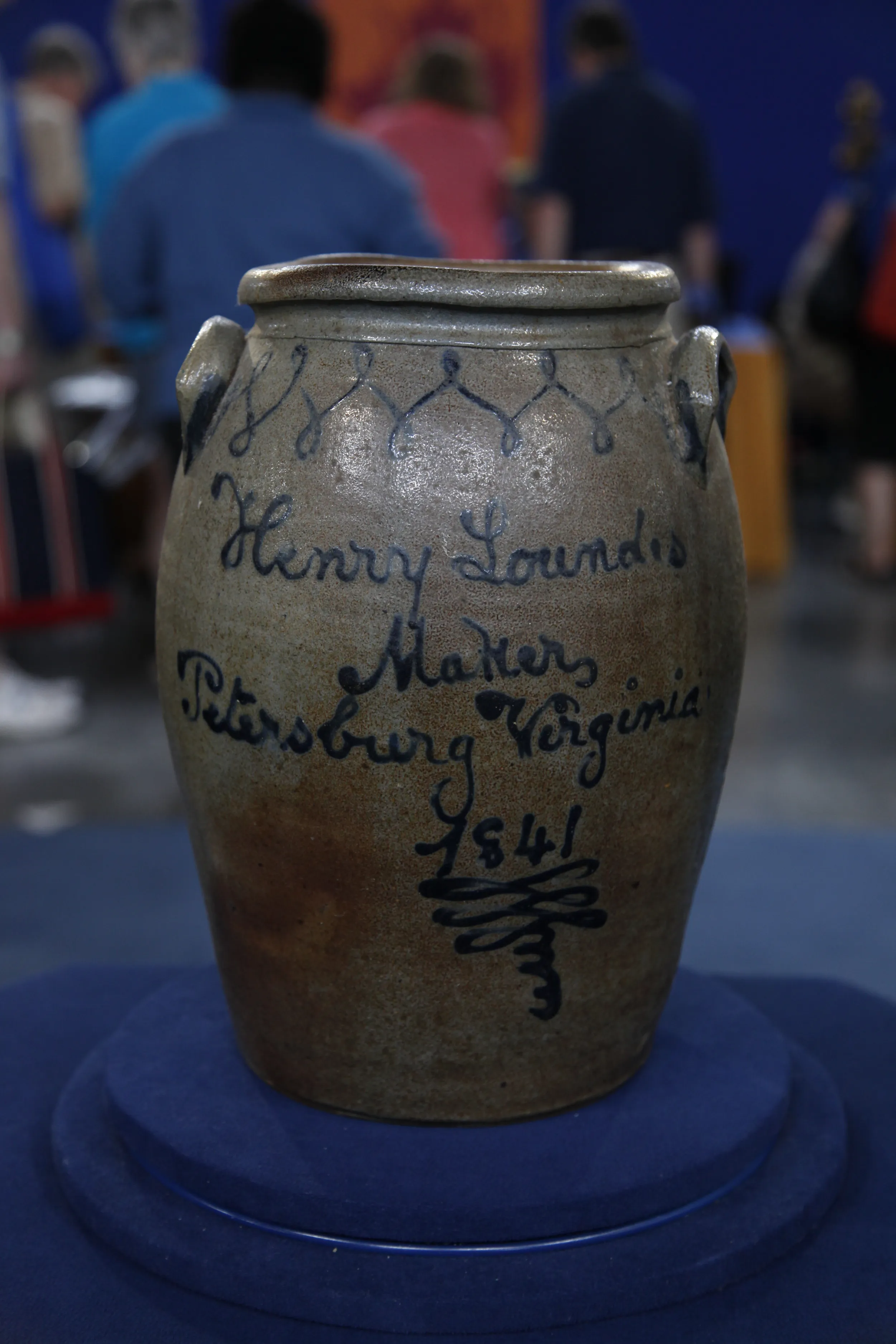GUEST: This honey pot belongs to my husband. He inherited it from his grandmother. She died in, I believe, 1952, and it came from her grandmother. And it's been in our house for, I guess, about 50 years-- mostly in our house. He had a men's shop, and he used it for umbrellas for a while, but I persuaded him to bring it back home. And as far as I know, it has never been appraised. But I do recall, I believe it was in the late 1950s, he received a letter from a lady who had seen the honey jar in his grandmother's home. And I believe she wrote an article for some antiques publication. And she told him that it really belonged in a museum. He thinks she said in the Smithsonian. I don't really know. But he thinks it's very old, and, and we think it's lovely.
APPRAISER: Well, you're right, it is lovely, and I don't think she was overreaching when she said it should be in a museum, and perhaps the Smithsonian.
GUEST: Uh-huh.
APPRAISER: Do you have any idea where this pot was made or by whom it was made?
GUEST: No, we don't, and, and I asked my husband about that, if he knew where his great-great-grandmother came from. He thought the family lived in middle Tennessee for a while.
APPRAISER: You have a very, very important honey pot. It was a very large hive of bees that would have had to fill this one, I can tell you.
GUEST: Yes, yes.
APPRAISER: I can barely see you over it. But this very large stoneware pot was made in Tennessee...
GUEST: In Tennessee?
APPRAISER: Middle Tennessee.
GUEST: Oh...
APPRAISER: It was made by the Craven family of potters. That was typical in Tennessee-- the early potteries were run by families.
GUEST: Oh, uh-huh.
APPRAISER: The Cravens came here from North Carolina. This is unusual for its size.
GUEST: Mm-hmm.
APPRAISER: It's in superb condition, and it's very distinctively Craven.
GUEST: Mm-hmm.
APPRAISER: I was fortunate to have along with me a copy of the exhibition catalogue...
GUEST: Oh.
APPRAISER: in Nashville, at the Frist Center of the Visual Arts in 2003, 2004, where a very similar pot marked by Craven...
GUEST: Craven.
APPRAISER: ...was in the exhibition. This particular pot has all the Craven characteristics-- the ovoid shape...
GUEST: Mm-hmm.
APPRAISER: ...the great crimped banding around the middle.
GUEST: Mm-hmm.
APPRAISER: Which serves another purpose.
GUEST: Oh.
APPRAISER: This jar was so large, they had to do it in two sections.
GUEST: We wondered about that, uh-huh, uh-huh.
APPRAISER: They joined the two sections together in the middle...
GUEST: I see.
APPRAISER: Covered that connection with a crimped band. The wonderful offset handles at the top...
GUEST: Mm-hmm, mm-hmm.
APPRAISER: ...are also distinctive and very decorative. And being offset, you could grab the pot from either side.
GUEST: Yes.
APPRAISER: It has wonderful incised-line decoration and banding here. As a rare Tennessee example and one of the best that is probably out there, this is a fairly valuable item. It's very hard, when there are not many others like it...
GUEST: I see, uh-huh.
APPRAISER: ...as comparables, to put an exact value.
GUEST: Well, when do you think it was made?
APPRAISER: It was made sometime between 1820 and 1860. So it's pre-Civil War. Given its rarity, we can only take an educated guess.
GUEST: Yes, okay.
APPRAISER: And I would say that at auction, I would put a conservative estimate of, say, $20,000 to $30,000.
GUEST: Oh, oh, that's wonderful.
APPRAISER: However, if you were to insure this, I would put at least $40,000 on it.
GUEST: Oh, wow.
APPRAISER: So you have a honey of a pot.
GUEST: Oh.
APPRAISER: And thank you for bringing it in.
GUEST: Oh, yes, thank you very much.











